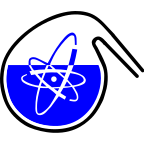Speaker
Description
Permeable reactive barriers (PRB) enable physical, chemical or biological in situ treatment of contaminated groundwater by bringing it into contact with reactive materials. The reactive material is inserted underground in a natural aquifer and intercepts the pollution plume as it is carried along within the aquifer. Thus the contaminants are treated with neither wholesale soil excavation nor water pumping. This cost-effective clean-up technology has much less impact on the environment than other methods, appearing generally more economical profitable over the long term in comparison with other methods.
In this study sorption characteristics of shungite, lydite and activated carbons as natural material that can be used for creation a part of complex multi-layer PRB were specified. Sorption coefficients (Kd) and kinetic characteristics for shungite, lydite and activated carbons for Tc-99 were obtained. Speciations technetium on these materials were investigated by means of the sequential extraction method. Sorption isotherms for technetium uptake by shungite were obtained.
Was shown that uptake of Tc(VII) by shungite depend both on specific form of carbon occurring in shungite and numerous associate minerals, especially pyrite and pyrrhotite.

